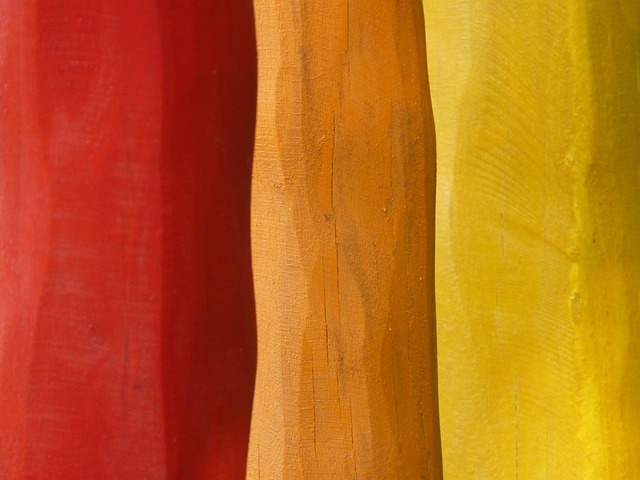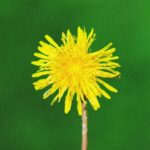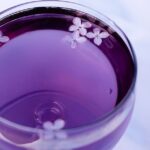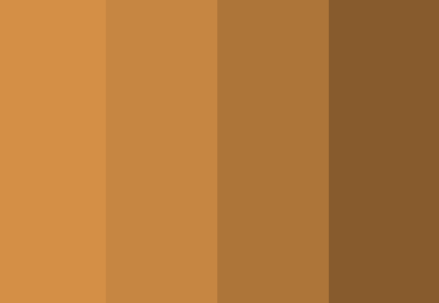Immersing oneself in the vibrant world of color theory is akin to embarking on an enchanting journey where science and art intertwine. At its heart, color theory provides tangible guidance for mixing colors and understanding the visual outcomes of various color pairings. The cornerstone of this intriguing concept is the color wheel, a pictorial representation that displays primary, secondary, and tertiary shades in a harmonious chromatic sequence.
The role of the color wheel goes beyond being merely illustrative; it serves as an exhaustive guidebook for interpreting how colors interact with each other by demystifying queries like ‘what hue emerges from blending red with orange?’. It empowers artists and designers to grasp the intricate dynamics between different shades more deeply, thereby breathing life into their works through purposeful selection of hues. Unfolding the mysteries embedded within both -the color wheel and broader spectrum of color theory- can significantly enhance not only aesthetic allure but also magnify psychological resonance these hues could potentially evoke in spectators.
Exploring Primary Colors: A Brief Overview
The multifaceted, vivacious domain of color embarks on its odyssey with three unique pillars – the red, blue, and yellow hues – frequently alluded to as primary colors. These are inherent in the color wheel’s structure and therefore, can’t be obtained by merging other shades together. Among these prismatic players, red and orange offer a fascinating spectacle when one dives into their personalities and interactions.
Our exploration of this chromatic symphony would remain unfinished if we didn’t ponder over the question – What does Red amalgamated with Orange create? The interplay between these two distinct tints is foundational to numerous visual arenas such as painting, design, or digital media. They serve as vital components of the warm color family tree which conjures up feelings of warmth, energy and exhilaration. When red unites with orange it births an effervescent fusion of hues that is pivotal for unraveling wider connotations within the realm of color theory.
The Role of Secondary Colors in Art and Design
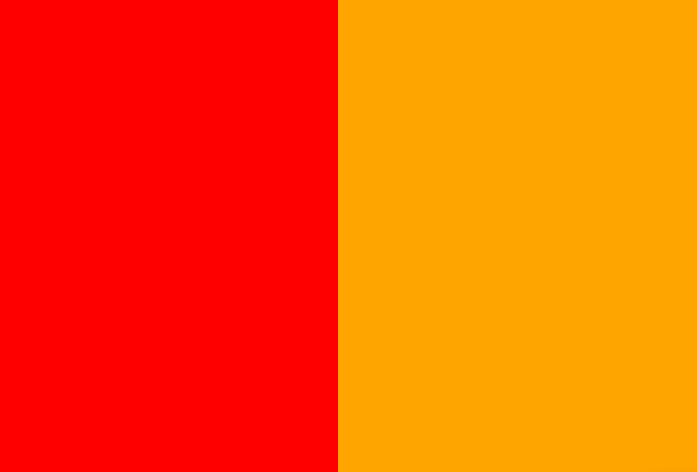
Emerging from the fusion of primary hues, secondary colors unfurl a broad spectrum that is frequently harnessed by artisans and designers to mold their masterpieces. The significance of these colors in shaping the aura, sentiment, and resonance of artistic creations should not be underestimated as they add substantial vibrancy. For instance, contemplating on the color outcome when red intertwines with orange necessitates an intricate comprehension of secondary shades.
In the realm of design, secondary hues amplify the opulence embedded within creations; bestowing a depth unattainable solely through primary colors. Delving into an example such as red intermingling with orange births a variant akin to warm-red or exuberant-orange which infuses vivacity into compositions. This resultant hue proves invaluable for projects intended to stir emotions like zeal or vitality. Therefore, proficiency in manipulating secondary colors empowers artists and designers to modulate sentiments, instill harmony or underscore contrasts – thereby boosting both impact and connotation within their work.
The role of secondary colors in art and design can be dissected into several key points:
- Secondary Colors as Mood Modifiers: The use of these hues, such as purple, green or orange, can significantly alter the mood or tone of a piece. For instance, the presence of green may evoke feelings of tranquility and peace while orange might stimulate excitement or energy.
- Secondary Colors for Visual Depth: These shades provide an additional layer to artistic compositions that primary colors alone cannot achieve. This helps create a sense of depth and dimension within artworks or designs.
- Secondary Colors for Emphasis: They are often used to highlight specific elements within a composition. By using contrasting secondary hues against primary ones, artists can draw attention to certain details they wish their audience to focus on.
- Use in Color Schemes: In interior design especially, secondary colors play crucial roles in determining color schemes. For example, pairing complementary secondary hues like violet with yellow creates visually appealing spaces without overwhelming the senses.
- Symbolism & Cultural Significance: Different cultures attribute various meanings and significance to each color; understanding this allows artists and designers to incorporate suitable shades depending on their target audience’s cultural background.
In conclusion, mastering the application of secondary colors is pivotal for any artist or designer aiming at creating compelling pieces with profound emotional resonance. Whether it is setting moods, adding visual depth or emphasizing details – these versatile hues serve multiple purposes that make them indispensable tools in every creative endeavor.
The Science of Mixing Colors: How it Works
Embarking upon the enigmatic realm of color theory, one might find themselves tangled in a riddle: “What offspring does the union of red and orange birth?” Not only does the alchemy of color blending engender novel shades, but it also births an array of implications that are as diverse as they are intriguing. Whether seen through the lens of artistry or design, or even our own perception, this peculiar blend engenders a kaleidoscope of emotional responses while simultaneously revealing various physical characteristics.
The way we perceive color is etched into existence by none other than Sir Isaac Newton himself. He based his understanding on an additive color model where the marriage between red light and green light begets yellow. However, when stepping into traditional realms such as painting and design, a subtractive model assumes precedence over its additive counterpart for mixing colors. In this scenario – blending together red – revered for its fervor and vitality with orange – known to evoke warmth and joy envelopes you in its rich vermilion embrace; more colloquially referred to as poppy red—an exotic shade pulsating with life carrying both intensity from red along with warmth from orange.
Delving into the Mixing Process: Red and Orange
In the enigmatic sphere of color theory, an enthralling experiment nestles within the procedure of intertwining distinct tints to yield a fresh chromatic presence altogether. The fusion of two primary pigments – red and orange, unfolds as an ideal illustration of this blending exploration. Intriguingly enough, even though orange is in itself a secondary hue – born from the mingling of primary shades like red and yellow, its union with red unravels an alluring and spellbinding outcome.
When we merge red – a primeval shade that exemplifies vigorous sentiments such as zeal and wrath – with orange – embodying warmth and thrill; they unveil a sprightly reddish-orange nuance. This fiery tone resides at the vibrant edge of the spectrum. It’s often linked with qualities like exuberance, enthusiasm, invigoration; making it a favored pick among artists & designers aiming to incite powerful emotions.
The Resulting Color from Combining Red and Orange
The fusion of red and orange gives birth to an intensely radiant hue of red-orange, a color that mirrors the blazing glory of sunsets, the crispness of autumn leaves, and the rich bloom of poppies. The aura it exudes is not only warm but pulsates with energy; it’s a halfway house between red’s fiery zeal and orange’s buoyant optimism. It takes more than a basic understanding of color theory to truly uncover this hue – it demands exploration beyond simple tints, shades, and tones to fully grasp its profound impact and versatility.
In our vast universe where colors speak volumes, red-orange occupies an esteemed niche as a warmly hued tertiary color. Its position in the color wheel signifies its kinship with both primary red and secondary orange – a harmonious blend that infuses passion akin to burning embers coupled with enthusiasm brimming with vitality much like fresh citrus fruits. This warmth doesn’t whisper; instead, it shouts out loud! Artists or designers who masterfully wield this power can induce strong reactions or evoke specific moods within their subjects.
Applications of The New Color in Art and Design
The breathtaking fusion of red and orange shades, a radiant and cozy colour spectrum, is typically at the heart of boundary-breaking artwork and cutting-edge design. This palette brings an alluring depth to the table, radiating a sense of zeal and vigour that arrests the viewer’s gaze. Professionals navigating the labyrinthine world of art and design are often drawn towards this spellbinding colour combination in their quest for creating visually appealing masterpieces.
Birthed from a dynamic tango between red and orange, this profound hue has demonstrated its adaptability across varied artistic landscapes with aplomb. Visual artists frequently exploit it as a tool to infuse their works with an element of audacity; graphic designers on the other hand see it as an irresistible magnet for eyeballs when designing user interfaces or crafting marketing materials. The impact made by this unconventionally paired color stands as irrefutable proof that stepping out from under traditional color theory’s umbrella can open up a universe full of astonishing possibilities.
FAQs
The enigma of the color wheel is a spherical chart that exhibits the fascinating connections between sundry colors. Color theory, in contrast, acts as a structure used by artists and designers to comprehend and employ the captivating effects produced when different hues interact.
Primordial or primary colors are three fundamental hues – red, blue, and yellow. These provide the foundation from which we can fabricate all other shades by blending them in varying ratios. They stand as vital cornerstones within our vast spectrum of colors.
Secondary pigments – green, orange, purple materialize through amalgamation of two primary tones. Their significance in artistry and design is undeniable; they offer complementation to primary shades while establishing contrast hence augmenting visual impact on designs or works of art.
The scientific process behind fusing paints revolves around grasping optical color mixing principles. It signifies that combining two shades would usually result in a hue strikingly positioned at mid-point between these initial pair based upon their ratio proportions.
Merging crimson-red with vibrant-orange results into an intermediate shade sitting comfortably between both extremes – possibly rendering us something akin to reddish-orange or perhaps orangish-red. The final outcome hinges heavily on original tints used for both red & orange alongside their respective proportions
Fascinatingly enough if you merge fiery-red with bright-orange,you’re likely left staring at this warm,radiant hue that oscillates anywhere between eye-catching coral to deep,fiery red-orange.The exact shade is contingent on the specific tints & proportions used during this mixing process.
The vibrant new color born from intermingling of red and orange can be leveraged in countless ways across both art & design realms.It has potential to infuse warmth,capture attention or simply introduce an unexpected pop of color. Within arts it might stir certain emotions,create depth,dimension or emphasize specific components within a piece.In contrast within the world of design, this freshly-minted hue can breathe life into branding efforts,marketing collateral or even web designs hence helping craft visually engaging experiences.
